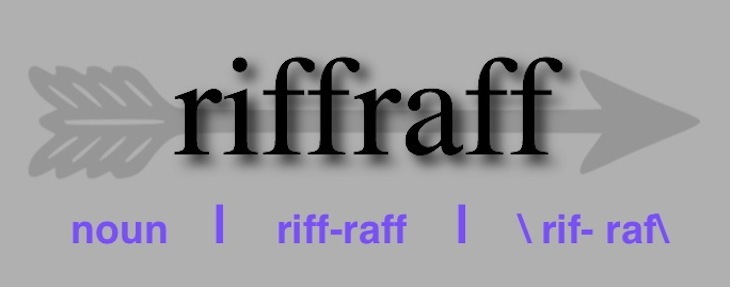Riff Raff: Starting from tourism scratch
by June 28, 2020 6:44 pm 1,526 views

Moments presenting an opportunity for change are maximized when considering all options to change opportunities. Which is why we should assess new directions for the Fort Smith Convention and Visitors Bureau before hiring a new director.
The city and its tourism bureau has not conducted a wholesale review of its collective front door welcome mat in at least 20 years. Our tourism strategy was created in a time before people looked for cool places to live and then look for a job in that place; before “staycation” and “nearcation” were widely known words; before it was “smart” to recruit the LGBTQ community and their discretionary dollars. Our tourism strategy is a 2000 Dodge Caravan that was all the rage when it rolled it off the showroom floor, but the left side sliding passenger door no longer slides, the CD player fizzled out a few years ago, and forget about a phone charger.
A thorough review is recommended because the bureau is the agency tasked to sell the city – and the region, really – to the world around us. The sales job also includes convincing the around 192,000 who live in the region, but outside Fort Smith, to spend their discretionary entertainment dollars in the city. The bureau is often the collective first impression for the city and the host – literally for some now that the bureau manages the Fort Smith Convention Center – for those who travel to the city.
There is no attempt at solutions in this writing. The potential for a smart new vision to emerge from collaboration among smart people negates any such hubris from this author. What follows, however, are a few examples of items on a review list.
We might look at lessons learned from changed marketing campaigns at state parks and tourism agencies and cities around the state and nation. Arkansas’ state tourism effort has in recent years learned much through technology about how and where to target a wide range of demographics. Such lessons applied to the region’s realities will likely adjust where marketing dollars are spent.
Such lessons learned may also result in new or adjusted staff needs and/or skills for a revamped bureau. Is there a need for a full-time social media producer who spends time with Peacemaker, Unexpected, Chaffee Crossing, and other events to help build upon what they do? What role does tourism have in supporting recruitment of doctors and other professionals to the area? Are we maximizing dollars available through casino operators in eastern Oklahoma to promote the region? Should group travel remain a primary focus? What are the range of marketing realities in a post-COVID tourism world? Those may be horrible ideas or sensitive subjects, but let’s question everything as if no cow is sacred.
And on the topic of sensitive and sacred, this review should include analysis of enacting a prepared food tax to allow Fort Smith to compete. Most cities – in Arkansas and outside – with which Fort Smith competes have food tax revenue to reach the markets the city also seeks to reach. The metro doesn’t have a big tourism anchor or several anchors – Crystal Bridges Museum of American Art, The Clinton Presidential Library, resort beaches – to be able to successfully compete with fewer dollars. We’ve seen in recent years Fort Smith’s private sector step up to grow tourism opportunities but that well is not bottomless. If the public sector is not able to feed it and incentivize private sector investments, those opportunities are likely to become fewer. Not having a prepared food tax is not a deal killer. But if you don’t want a tax, don’t bemoan that the city doesn’t recruit big events for the convention center, or question why the city doesn’t have the same tourism industry growth as other cities. It’s a business. If you want to grow it, you have to capitalize it.
We may also consider a new city visitor center. Miss Laura’s, the only bordello on the national register, is a great tourism asset, but is it best suited to be a modern first look for those traveling to the city?
Does the region’s western heritage need to be the primary focus of most marketing materials? To be sure, the history is important. My youngest daughter worked at the Fort Smith National Historic Site one summer and loved learning about the city’s history. But she will tell you the city should find a way to make that history more appealing to her demographic. Part of that could include a more honest accounting of the judicial and socio-economic history of the region since 1817.
There is no recommendation here about how the city conducts this review. An outside group could facilitate a top-to-bottom analysis. It could include a series of discussions and input from restaurant, hotel and other hospitality industry folks. The work may include input from tourism officials in adjacent cities. The process might mimic in some way how the Fort Smith Public School district gathered broad community input before taking a comprehensive mileage plan to voters – a plan overwhelmingly approved by said voters.
My confidence is low that the political will or willful patience exists for a transformative reset of the city’s internal and external imagery, promotional narrative, marketing reach and leadership structure. It’s likely the city will hire a new director before determining new directions.
But my confidence is high that a transformative new approach is needed. Tweaks around the edges, a new website or a catchy new logo and tagline will be nothing but a new paint job on that 2000 Dodge Caravan if the underlying structure, philosophy and funding is not addressed.
